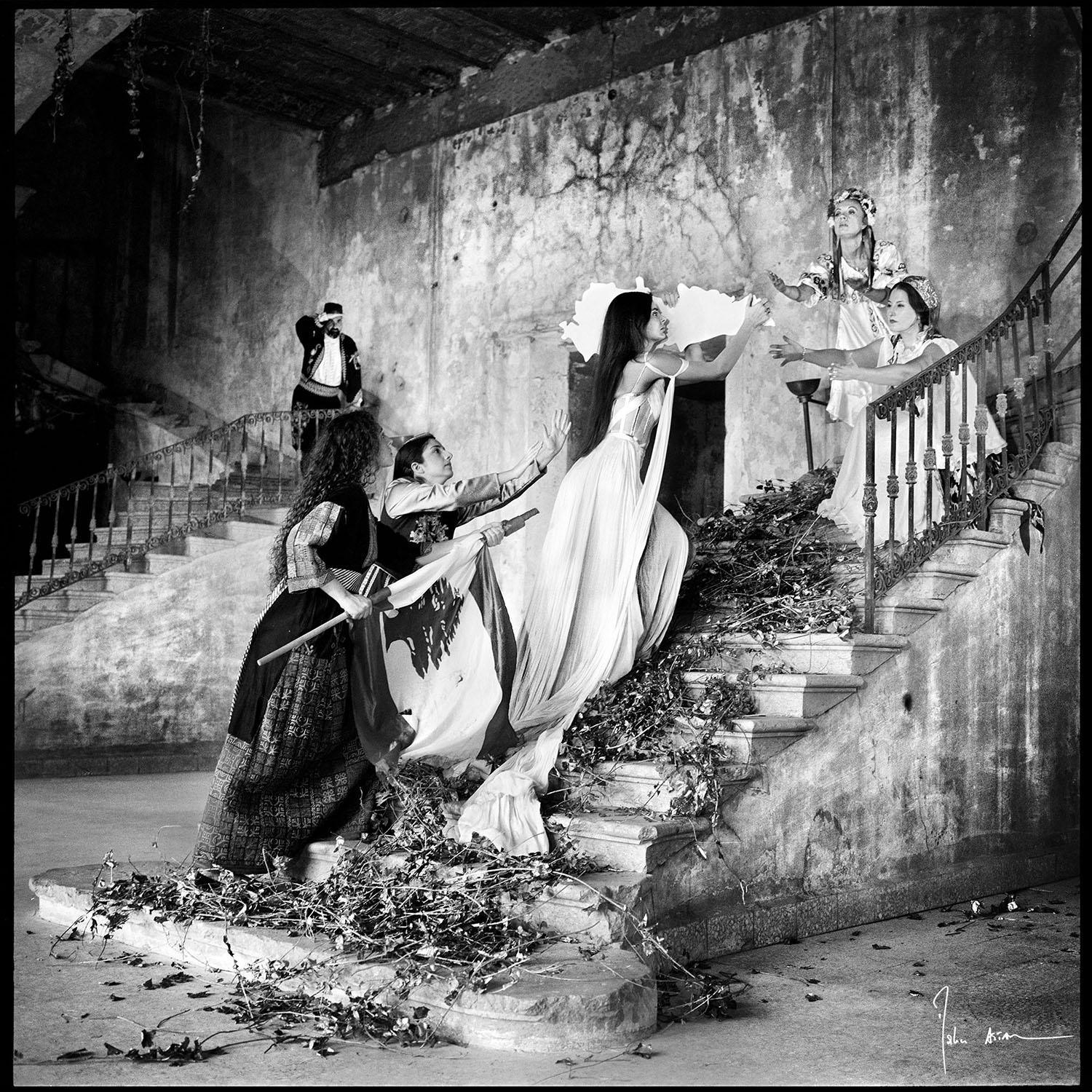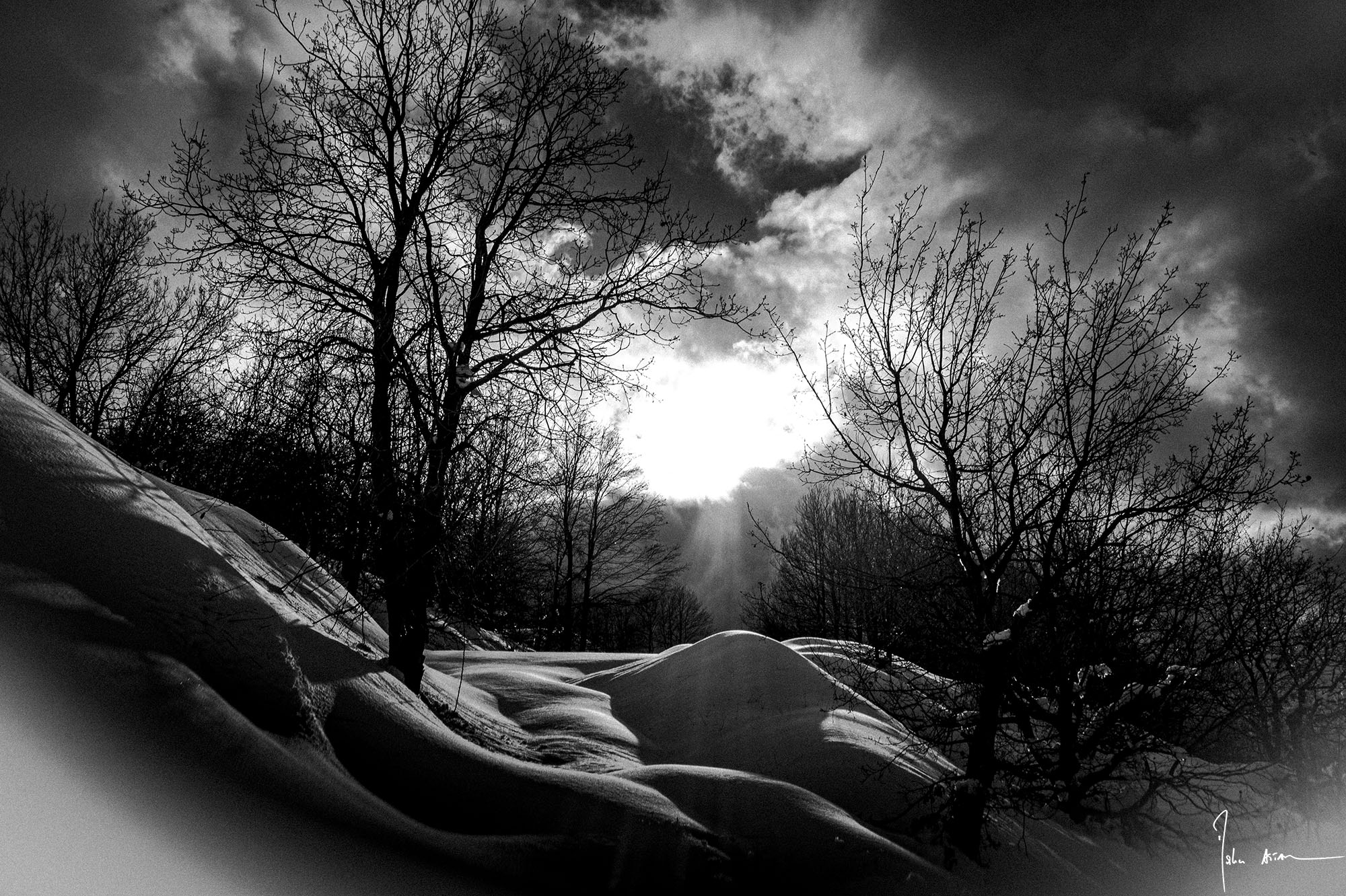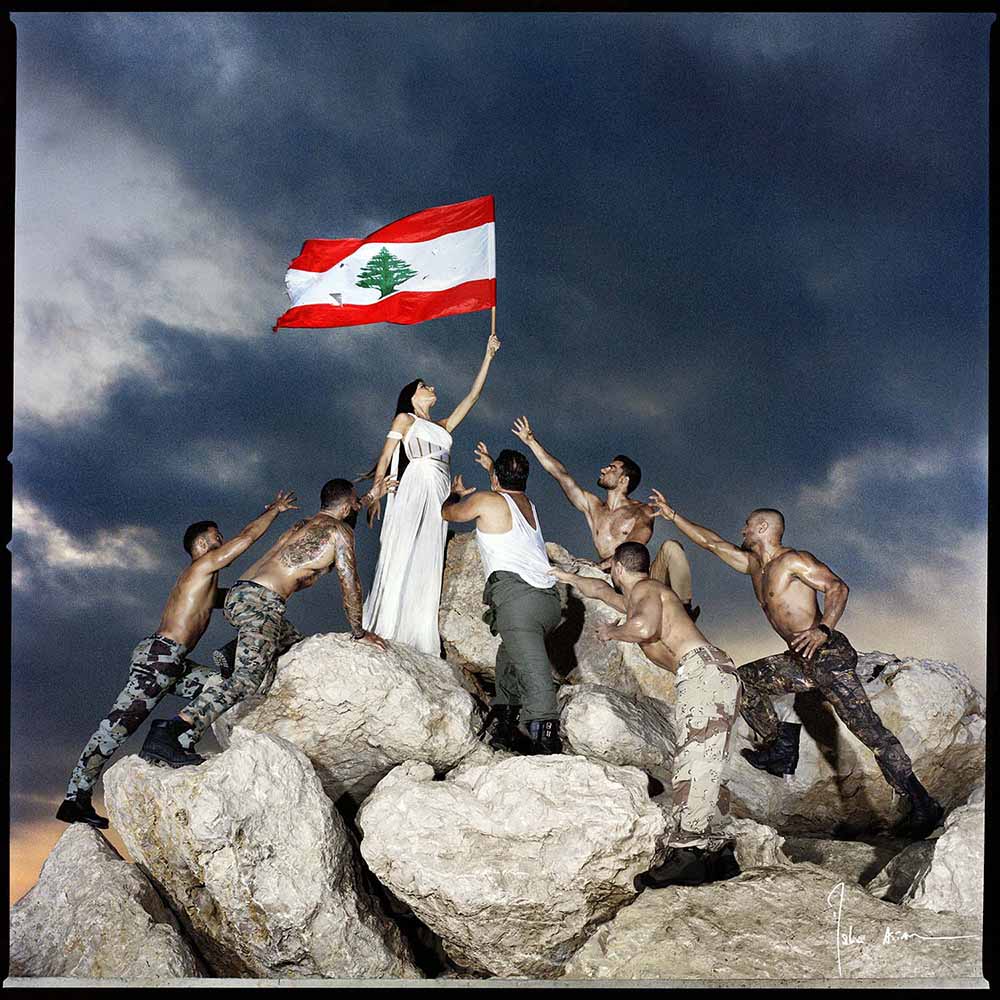“I wanted to give back to Beirut all its glory. It was once a glorious city; at the times of the Romans; Berytus was thought of highly”: it is in these words that Maher Attar, a renowned photographer and founder of the Art District gallery, recounted the genesis of “Berytus… a glorified city,” the exhibition he undertook to pay tribute to Beirut. Today art is perhaps the only way to give back to Beirut its glory in the current atmosphere of delinquency and gubernatorial decadence. The photographer had come back in 2016 to settle in Beirut after thirty years in France and across the world as war photo-reporter. Little did he know how much Beirut would still have to endure in terms of violence, indignity and impoverishment. He was and is, in love with his city no matter what…

A few months after the August 4th blast, while walking around Gemmayzeh – a historic neighborhood that was particularly hit by the port explosion– a damaged old house drew the artist’s attention. Attar would later transform the ruin into the gallery he was dreaming of to promote emerging talents in photography, seeing that such complex and tumultuous environment could be fertile ground for artists.
“Art (…) is before anything, the confrontation with one’s destiny”, wrote the renowned Lebanese poet, Nadia Tuéni, decades ago; and the Lebanese have had indeed no choice but to confront their destiny. Against all odds, the last years of repression and depression, marked by the October 2019 revolution, the port’s blast, and the financial crisis, have given rise to a buoyant creative impetus. It seemed as if all those who had left a project or a desire pending, felt the urgency to see it through and share it with the world.
A lot of the work was fueled by the need to break the silence on realities that were no longer acceptable. “Currently, I seek to shed light on things that are oppressed or normalized when they shouldn’t be” says the young photographer Myriam Boulos, born in 1992, who revealed all her talent on the occasion of the revolution and was spotted afterwards by the prestigious agency, Magnum. Like Boulos, many artists freed their voices, conveying in their own way, with their own tone, the events, the struggles and exploration but also the light, the vivacity and the journeys of their fellow citizens or their personal ones.
Many of them have raised Lebanon’s reputation high on the international scene as they had the capacity through their art, to transcend local issues and touch on commonly shared big questions. It was for instance the case for “Memory Box”, the movie by the duo Joana Hadjithomas and Khalil, which was nominated for the Oscars, for the Golden Bear at the Berlinale and for the Official Section of Sevilla Festival, to name a few. Wissam Charaf’s “Dirty, Difficult, Dangerous,” that tells a love story of migrant workers in Lebanon’s harsh context, won Europa’s Cinema Label in Venice Film Festival; and “Costa Brava” by Mounia Akl, a critique of hyper capitalism has also been distinguished in first tier festivals as was the case of “Beirut, the Aftermath,” Fadia Ahmad’s acclaimed and moving documentary on the Beirut blast.
With its broad spectrum of films that spoke of universal humanity behind a specific experience, the Lebanese cinema had its place of honor last September at the prestigious Spanish Casa Arabe in Madrid*, in a month long cycle entitled “Light from a broken land”, which drew a large audience. The institution, in collaboration with Photo Espana, also hosted “Lights or Shadows of what was and still is” an exhibition of Lebanese emerging photographers, Collective 1200. Artist Zeina Nader held her 100th show at Gaudi’s famous La Pedrera – Casa Mila in Barcelona in the context of its immersive project that recapped several digital exhibitions in the world.

Not all Lebanese artists’ narrative is about violence and misery. As a counter reaction, many like Zeina Nader have turned their gaze on elements of beauty, such as nature, portraits, architecture, every day life’s small moments of grace, to rise above chaos. Marie Noelle Fattal’s photographs gathered in her book Beirutis; Lina Husseini’s sculptures, Nada Matta’s paintings all fall in these realms as did the various artists showcased at the “Up and Coming talents” Art District’s exhibition in October 2022.
Many of these artists were supported initially by collectives, art patrons, or galleries that have been burgeoning in the last years, as opportunities in the art market have grown for Lebanese artists. If not all of these collectives have been consistent, they have certainly served as catalysts for the artists they have showed, many of which have soared on their own since then, crossing oceans sometimes to share their talent and nurture their creativity beyond their borders.
Lebanese artists also benefited particularly from the West’s sympathy: they received considerable support after the Beirut blast by Western donors and cultural institutions, which preferred to direct their aid to both Lebanese civil society and its creative scene rather than the public institutions, infested by corruption. Nafas, the French Embassy’s program supported one hundred artists’ residencies in France; the Arab Fund for Art and Culture raised a substantial relief fund to support creatives; cultural institutions such as the British Council and the Goethe Institute also put together some support programs; and the Lebanese diaspora mobilized its resources to stand behind its artists back home. It not only raised funds for them but also bought their work, creating increased visibility for them around the world. .
Galleries, auctions, and online platforms such as the well-established Artscoops and Emergeast attest to this appetite for Lebanese art. Inside the country, collectors but also residents redirecting their funds from the defaulting banking system saw an investment opportunity in the local art market. This set a trend that continued even after the blast and has also pushed some emerging artists and investors to get interested in NFTs. Magda Malkoun, dubbed Best Emerging Artist of 2021 at World Art Dubai, is a well-known figure in NFT art. She lives in Dubai but all her work is inspired by the notions of exile and by Beirut. Many Lebanese like her from the diaspora are inspired by their homeland and its chaotic yet fascinating soul.

To devote one’s self to creation, a minimum of safety and material conditions need to be met; this is why many youth have chosen the road of self-imposed exile. For the ones who were not able to leave, a few older and mature artists as well as well-off cultural entrepreneurs have been endeavoring to provide them with spaces for creation, expression, and promotion. Actress and producer Josyane Boulos, with a group of theater aficionados, took back the famous Monnot theater: the theater is now showing dance performances, stand-up comedy, plays, in Arabic, French, and English; the program for the entire year is already booked and the shows are full. Lebanese are in dire need for places to express and theater is the place where this has been most represented. This is why, actor and director Kassem Istanbouli, 35, originally from the south of the country, has begun restoring abandoned theaters in Lebanon in an effort to reform the country’s image in a way that counters sectarian violence. In this perspective, his latest project is the restoration of Cinema Empire, the last of five historic cinemas in Tripoli. A once cinema-rich city, now viewed as a place of violence and endemic poverty. Istanbouli believes in his mission: “when you open a cinema and a theater, people will come and attend. But if you give them a gun, of course they will shoot at each other and kill each other.”
As long as the crisis has not plunged everyone into literal hunger, as long as the Lebanese have the inner resources to produce art and to transmute their material condition and limitations, they will be alive. When one is in touch with their creative instinct, one recovers their humanity and hence the possibility to change; this, as well as freedom is lost when one is condemned to mere subsistence. Because culture is an antidote to radicalization, violence, and darkness it is now more necessary than ever, especially in times where insecurity and financial stress can lead to isolation. Because it allows for imagination, nuance, and alternative narratives; because it favors and produces encounters, it is a vector of life and peace building. When asked to cut arts funding in favor of the war effort, Winston Churchill responded “then what are we fighting for?” And it is precisely for this reason that Lebanon is worth fighting for; for the uniqueness of its plural culture, for its light and freedom, for the combativeness of its artists and free spirits. “Beirut is in the Orient the last sanctuary where man can dress with light” wrote the poet Nadia Tuéni.
* Curated by the author of this article.
Cover Photo: “Freedom” by the photographer Maher Attar. All image credits belong to Maher Attar.
Follow us on Facebook, Twitter and LinkedIn to see and interact with our latest contents.
If you like our stories, events, publications and dossiers, sign up for our newsletter (twice a month).


